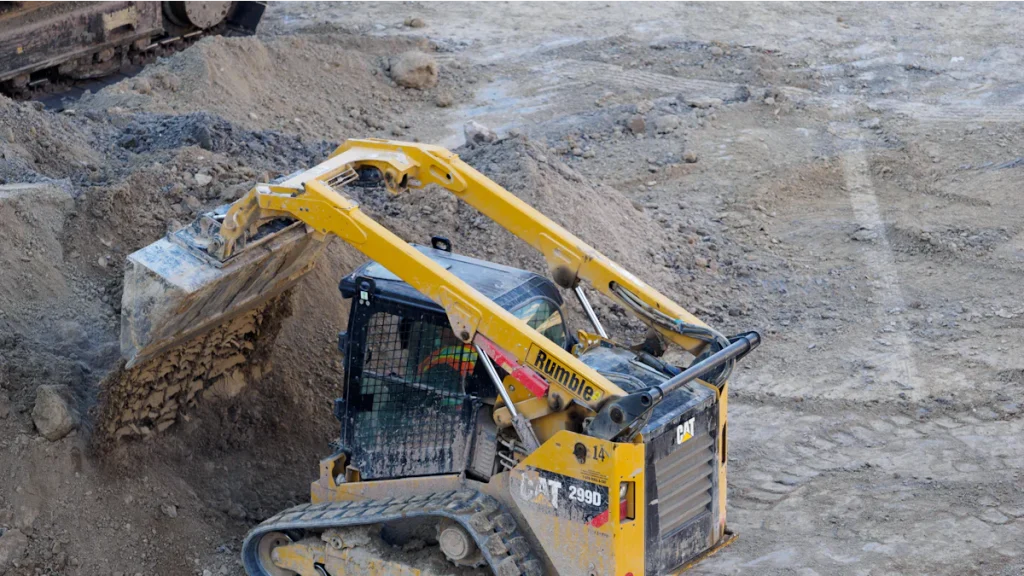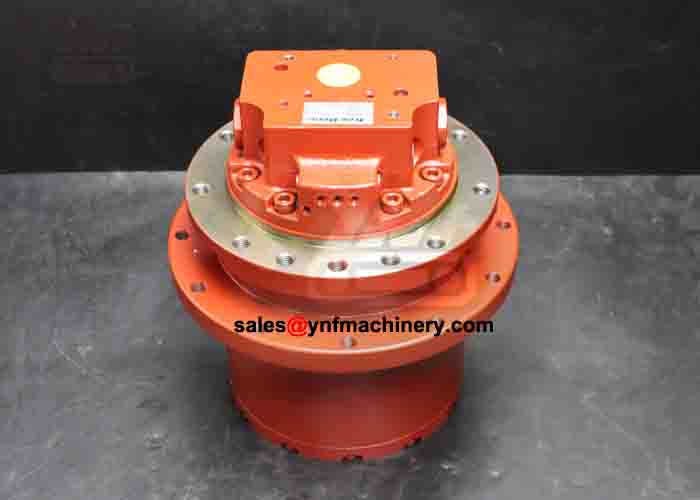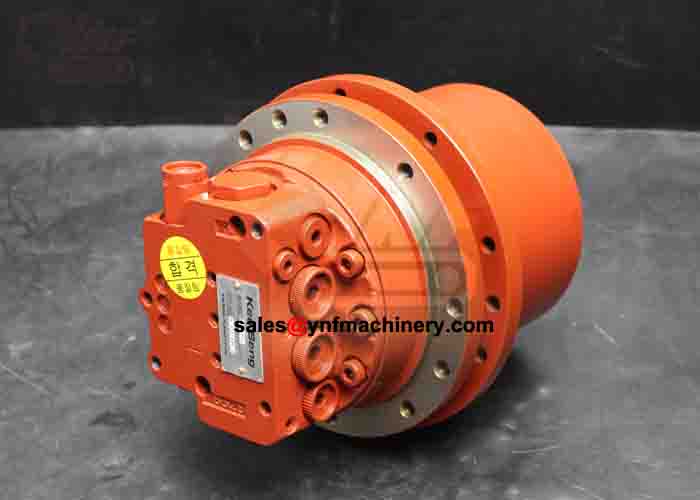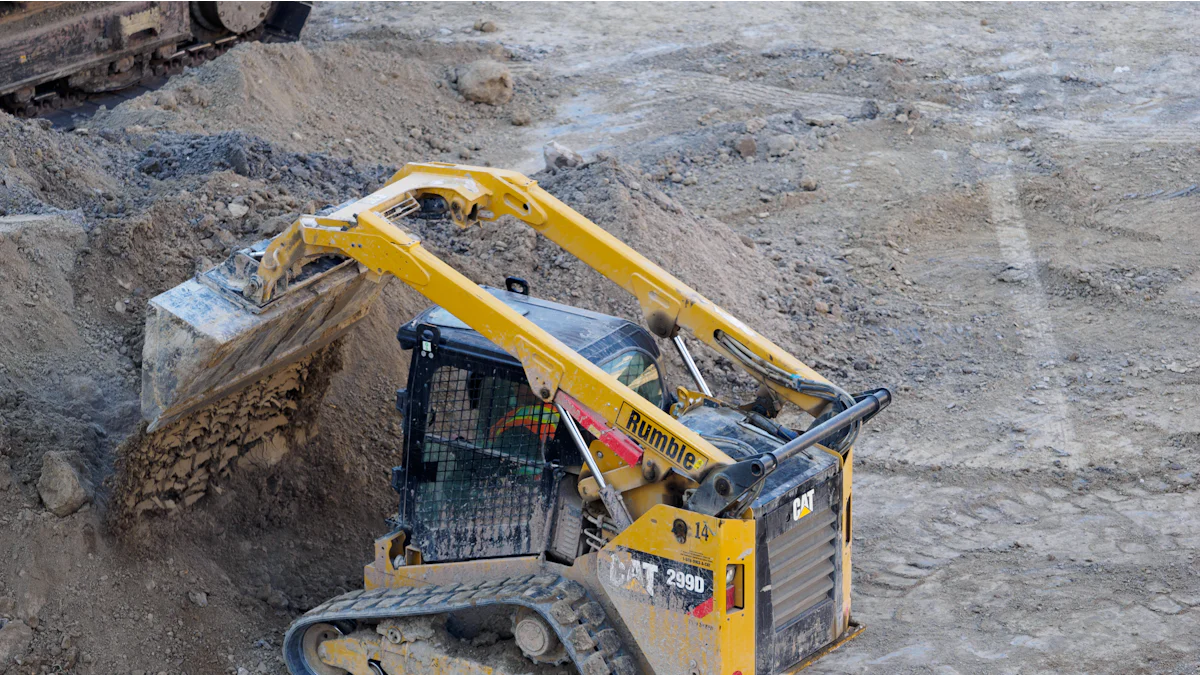
Excavator final drive parts are essential for transferring power from the engine to the tracks, enabling smooth and efficient movement. The final drive plays a pivotal role in converting hydraulic energy into mechanical motion, ensuring the excavator can handle heavy loads and navigate challenging terrains. These components are designed to endure intense pressure and maintain stability during demanding tasks. Understanding their functions helps you optimize performance and avoid costly repairs. Whether in construction or other industries relying on heavy machinery, knowing how these excavator parts work ensures reliable operation and prolonged equipment life. Find out more of the final drives for excavators.
Key Takeaways
Excavator final drive parts are crucial for converting hydraulic energy into mechanical motion, enabling efficient movement and stability on challenging terrains.
Regular inspections and maintenance of the final drive can prevent costly repairs and extend the lifespan of your excavator.
Using OEM (Original Equipment Manufacturer) parts for replacements ensures compatibility and reliability, enhancing the performance of your excavator.
The gear reduction system in the final drive increases torque while reducing speed, allowing the excavator to handle heavy loads with precision.
Hydraulic motors are essential for powering the final drive, and their efficiency directly impacts the overall performance of the excavator.
Keeping the final drive clean and free from contaminants is vital for maintaining its efficiency and preventing premature wear.
Understanding the functions of each component in the final drive helps optimize performance and ensures reliable operation in demanding environments.
What Are Excavator Final Drive Parts?
Overview of the Final Drive System
Definition and purpose of the final drive.
When talking about the excavator final drive, it’s one of a critical excavator parts in an excavator’s power transmission system. It converts hydraulic energy from the engine into mechanical force, enabling the tracks to move. This system ensures that the excavator operates efficiently, even under heavy loads or on challenging terrains. By reducing the speed of the engine’s output and increasing torque, the excavator final drive provides the necessary power for smooth and controlled operation.
The purpose of the final drive extends beyond just movement. It plays a vital role in maintaining stability and distributing power evenly to the tracks. Without this essential part, the excavator would struggle to perform tasks effectively, especially in demanding environments like construction sites or rugged landscapes.
How the final drive connects to the excavator’s tracks.
The final drive connects directly to the tracks through a system of gears and sprockets. Located at the rear of the undercarriage, it transfers rotational force to the driving sprockets, which then propel the tracks forward or backward. This connection ensures precise control over the excavator’s movement, allowing it to navigate tight spaces or uneven surfaces with ease.
The integration of the final drive parts, such as the hydraulic motor and gear reduction assembly, ensures seamless power transmission. These components work together to convert the engine’s energy into the rotational force needed to drive the tracks. This efficient design makes the final drives for excavators indispensable for their mobility and productivity.
Key Role of the Final Drive in Excavators
Power transmission to the tracks.
The excavator final drive is responsible for transmitting power from the engine to the tracks. It receives hydraulic energy from the main pump and converts it into mechanical motion. This process allows the excavator to move efficiently, whether it’s traveling across a job site or repositioning for a new task. The final drive ensures that the tracks receive consistent power, enabling the machine to handle heavy loads and maintain steady performance.
Contribution to movement, torque, and stability.
The final drive significantly impacts the excavator’s ability to generate torque, which is essential for handling tough tasks like digging or lifting. By reducing the engine’s speed and increasing torque, the final drive allows the excavator to operate smoothly, even in demanding conditions. This torque multiplication ensures that the machine can tackle heavy-duty jobs without compromising efficiency.
In addition to torque, the final drive contributes to the excavator’s overall stability. By evenly distributing power to the tracks, it prevents uneven wear and enhances the machine’s balance during operation. This stability is crucial for maintaining control, especially when working on slopes or uneven terrain. The excavator final drive parts play a pivotal role in ensuring that the machine remains reliable and efficient, making them a cornerstone of heavy machinery performance.
Key Components of Excavator Final Drives and Their Functions
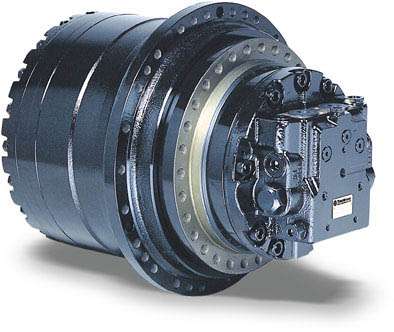
Hydraulic Motor
Function: Converts hydraulic energy into mechanical energy.
The hydraulic motor serves as the powerhouse of the excavator final drive. It takes pressurized hydraulic fluid from the excavator’s main pump and transforms it into mechanical energy. This conversion is essential for powering the tracks and enabling the excavator to move efficiently. Without the hydraulic motor, the final drive system would fail to deliver the necessary force for movement.
The hydraulic motor’s design ensures optimal performance under high pressure. Its ability to handle intense workloads makes it a critical component in the final drive. By efficiently converting hydraulic energy, it supports the excavator in performing tasks like digging, lifting, and navigating uneven terrains.
Importance in powering the final drive system.
The hydraulic motor directly impacts the overall performance of the excavator final drive. Its efficiency determines how smoothly the machine operates. A well-functioning hydraulic motor ensures consistent power delivery to the tracks, allowing the excavator to handle heavy loads and maintain stability. This reliability is crucial for construction and other demanding applications where downtime can lead to significant delays.
Gear Reduction System
Function: Reduces motor speed while increasing torque.
The gear reduction system plays a pivotal role in the excavator final drive. It reduces the high rotational speed generated by the hydraulic motor and increases torque. This process ensures that the excavator can perform heavy-duty tasks with precision and control. The system uses a combination of gears, including a central sun gear, planet gears, and a ring gear, to achieve this balance between speed and torque.
By lowering the motor’s speed, the gear reduction system prevents excessive wear on the final drive parts. At the same time, the increased torque allows the excavator to handle challenging tasks, such as moving heavy materials or operating on steep slopes.
Role in handling heavy loads and precise movements.
The gear reduction system ensures that the excavator can manage heavy loads without compromising performance. It provides the necessary torque to move the tracks and maintain stability, even under extreme conditions. This system also enhances the excavator’s ability to make precise movements, which is essential for tasks requiring accuracy, such as trenching or grading.
Bearings and Seals
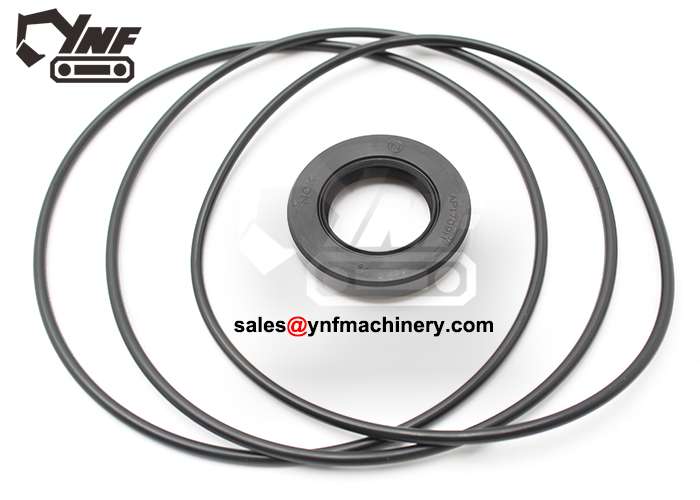
Function: Ensure smooth rotation and reduce friction.
Bearings and seals are vital components of the excavator final drive. Bearings facilitate smooth rotation within the system, reducing friction between moving parts. This reduction in friction minimizes wear and tear, extending the lifespan of the final drive parts. Seals, on the other hand, prevent hydraulic fluid from leaking and keep contaminants like dirt and water out of the system.
These components work together to maintain the efficiency of the final drive. Properly functioning bearings and seals ensure that the excavator operates smoothly, even in harsh environments.
Protect the system from contaminants like dirt and water.
Seals act as a protective barrier for the final drive. They prevent external contaminants from entering the system, which could otherwise cause damage to critical components like the drive motor and gear reduction assembly. By keeping dirt and water out, seals help maintain the integrity of the excavator final drive, ensuring reliable performance over time.
Other Components
Planetary Gears: Role in Distributing Torque Evenly
Planetary gears play a crucial role in the functionality of the excavator’s final drive. This gear system consists of three main components: the sun gear, planet gears, and a ring gear. Together, they work to reduce the high rotational speed generated by the hydraulic motor while increasing torque. This process ensures that the excavator can handle heavy loads and maintain precise movements.
The unique arrangement of planetary gears allows for even torque distribution across the tracks. This balance is essential for smooth operation, especially when navigating uneven terrain or performing tasks that require stability. By evenly spreading the load, planetary gears help prevent unnecessary wear on the final drive components. Their design also enhances the excavator’s ability to perform demanding tasks with efficiency and reliability.
The planetary gear system not only boosts torque but also ensures smooth power transmission, making it indispensable for heavy machinery like excavators.
Casing: Protects Internal Components from External Damage
The casing serves as the protective shield for the final drive’s internal components. It encloses critical parts like the hydraulic motor, gear reduction system, and planetary gears, safeguarding them from external elements such as dirt, water, and debris. This protection is vital for maintaining the longevity and performance of the final drive.
A well-designed casing also helps absorb shocks and vibrations during operation. This feature reduces the risk of damage to the internal components, ensuring that the final drive continues to function efficiently under challenging conditions. Additionally, the casing contributes to the structural integrity of the final drive, keeping all parts securely in place.
By preventing contaminants from entering the system, the casing minimizes the chances of wear and tear. This protection ensures that your excavator operates smoothly, even in harsh environments. Regular inspection of the casing for cracks or damage can help you avoid costly repairs and downtime.
How Do Final Drives Work in an Excavator?
Step-by-Step Operation
Hydraulic motor receives pressurized fluid.
The operation of the excavator final drive begins with the hydraulic motor. This motor receives pressurized hydraulic fluid from the excavator’s main pump. The fluid, under high pressure, carries the energy needed to initiate movement. As the hydraulic motor processes this fluid, it converts the hydraulic energy into mechanical energy. This conversion is essential for powering the final drive system and ensuring the excavator can perform tasks efficiently.
The hydraulic motor’s role is critical because it acts as the starting point for the entire power transmission process. Without this component, the excavator would lack the force required to move its tracks or handle heavy loads. Its ability to manage high-pressure fluid ensures smooth and consistent performance during excavator operation.
Gear reduction system adjusts speed and torque.
Once the hydraulic motor generates mechanical energy, the gear reduction system takes over. This system reduces the high rotational speed produced by the motor while simultaneously increasing torque. By slowing down the motor’s output, the gear reduction system ensures that the excavator can handle demanding tasks like digging, lifting, or navigating uneven terrain.
The gear reduction system uses a combination of gears, including planetary gears, to achieve this balance. These gears distribute torque evenly across the tracks, enhancing stability and control. This process not only prevents strain on the drive motor but also allows the excavator to perform precise movements, even under heavy loads.
Power is transmitted to the tracks for movement.
After the gear reduction system adjusts the speed and torque, the final drive transmits the power to the tracks. This transmission occurs through a series of gears and sprockets that connect the final drive to the tracks. The rotational force generated by the system propels the tracks forward or backward, enabling the excavator to move.
This step is where the excavator final drive truly shines. By delivering consistent power to the tracks, it ensures smooth movement and reliable performance. Whether you’re navigating tight spaces or working on rugged terrain, the final drive provides the control and stability needed for efficient operation.
Integration with the Excavator’s Hydraulic System
How the final drive interacts with other hydraulic components.
The excavator final drive doesn’t work in isolation. It integrates seamlessly with the excavator’s hydraulic system, creating a cohesive network of components that work together to power the machine. The hydraulic motor in the final drive receives pressurized fluid from the main hydraulic pump, which also powers other essential systems like the boom and arm cylinders.
This interaction ensures that the excavator operates as a unified system. The hydraulic system distributes energy efficiently, allowing the final drive to perform its role without compromising the performance of other components. This integration is vital for maintaining the excavator’s overall functionality and reliability.
Importance of proper hydraulic pressure for optimal performance.
Maintaining proper hydraulic pressure is crucial for the efficient operation of the excavator final drive. Insufficient pressure can lead to reduced power output, affecting the machine’s ability to move or handle heavy loads. On the other hand, excessive pressure can strain the hydraulic motor and other components, leading to premature wear and potential system failure.
Regularly monitoring hydraulic fluid levels and pressure ensures that the final drive operates at peak efficiency. Proper maintenance not only extends the lifespan of the final drive but also enhances the overall performance of the excavator. By keeping the hydraulic system in optimal condition, you can avoid costly repairs and ensure smooth, reliable operation.
Why Are Final Drives Important for Excavator Performance?
Impact on Speed and Torque
How final drives determine the excavator’s movement capabilities.
The excavator final drive plays a central role in determining how effectively your machine moves. By converting hydraulic energy into mechanical power, it ensures that the tracks receive the necessary force to propel the excavator forward or backward. This conversion process allows the machine to navigate job sites with precision, whether you’re repositioning for an excavation task or traveling across uneven terrain.
The hydraulic motor within the final drive generates the power needed for movement. It works in tandem with the gear reduction system to adjust speed and torque, ensuring smooth and controlled operation. Without a properly functioning final drive, the excavator would struggle to maintain consistent movement, especially under heavy loads or challenging conditions.
Role in handling different terrains and loads.
Final drives for excavators are engineered to handle a variety of terrains and loads. The gear reduction system increases torque, enabling the machine to climb slopes, traverse rocky surfaces, or operate in muddy environments. This enhanced torque ensures that the excavator can perform demanding tasks like lifting heavy materials or digging through compact soil without losing stability.
The even distribution of power across the tracks also helps the excavator adapt to different ground conditions. Whether you’re working on a construction site or tackling a rugged landscape, the final drive ensures that your machine remains reliable and efficient. Its ability to manage diverse terrains and heavy loads makes it indispensable for heavy machinery performance.
Contribution to Stability and Efficiency
Ensuring smooth and controlled operations.
The excavator final drive contributes significantly to the stability and control of your machine. By evenly distributing torque to the tracks, it prevents uneven wear and ensures balanced operation. This balance is crucial when performing tasks that require precision, such as trenching or grading. The final drive’s design minimizes jerky movements, allowing you to operate the excavator smoothly, even in tight spaces or on uneven ground.
The hydraulic motor and gear reduction system work together to maintain consistent power delivery. This consistency ensures that the excavator responds predictably to operator inputs, enhancing safety and efficiency during operation. Smooth and controlled movement not only improves performance but also reduces the risk of accidents on the job site.
Reducing wear and tear on other components.
A well-maintained excavator final drive protects other critical components from excessive wear and tear. By managing torque and speed effectively, it reduces the strain on the hydraulic motor, tracks, and undercarriage. This reduction in stress extends the lifespan of these parts, saving you from costly repairs and downtime.
Seals and bearings within the final drive also play a vital role in maintaining efficiency. They prevent contaminants like dirt and water from entering the system, ensuring that internal components remain in optimal condition. Regular inspection and maintenance of the final drive help preserve its functions, keeping your excavator ready for any excavation task.
The final drive is not just a power transmission system; it’s a cornerstone of your excavator’s performance and longevity. Its ability to enhance stability, efficiency, and durability makes it an essential component for any heavy machinery.
Maintenance Tips for Excavator Final Drives
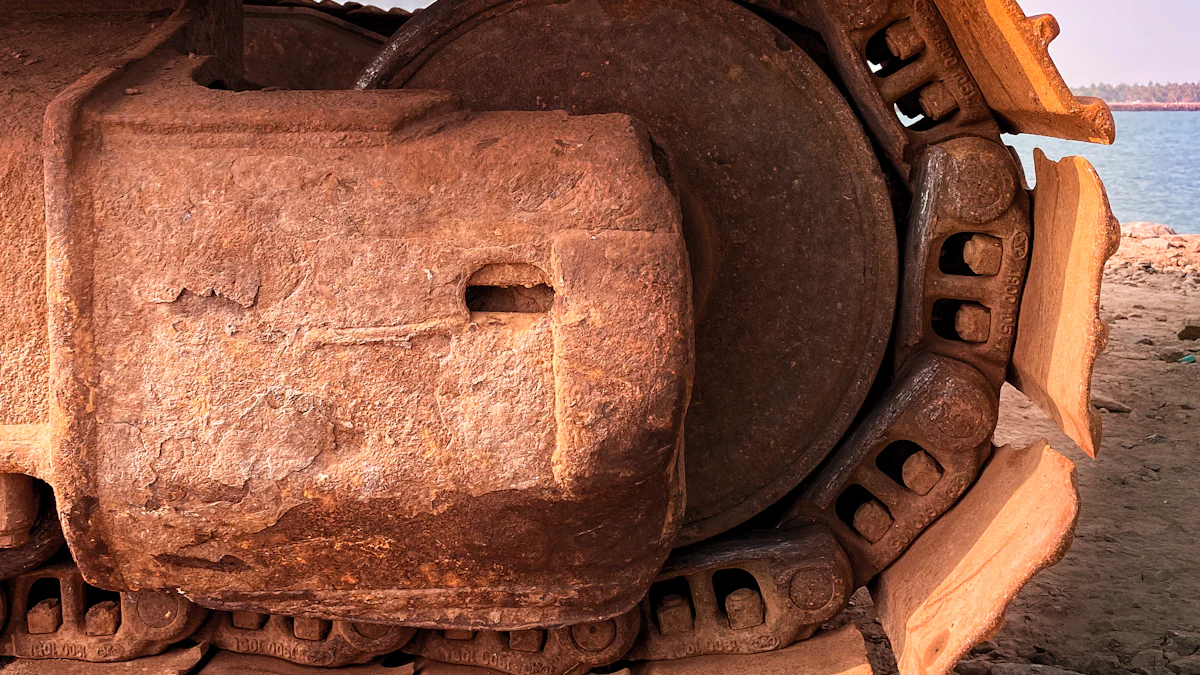
Proper maintenance of your excavator’s final drive ensures its longevity and optimal performance. Neglecting this critical component can lead to costly repairs and downtime. Follow these essential tips to keep your final drive in excellent condition.
Regular Inspection and Cleaning
Checking for leaks, cracks, or unusual noises.
Inspect the final drive regularly to identify potential issues early. Look for visible signs of oil leaks around the casing, as these may indicate worn seals or damaged components. Examine the surface for cracks or dents that could compromise the system’s integrity. Pay attention to unusual noises, such as grinding or clicking, during operation. These sounds often signal internal wear or misalignment, which requires immediate attention.
Regular inspections help you detect problems before they escalate, saving time and money on extensive repairs.
Cleaning dirt and debris from the final drive casing.
Dirt and debris can accumulate on the final drive casing, especially when operating in muddy or dusty environments. This buildup can trap moisture, leading to rust and corrosion. Use a soft brush or cloth to remove dirt from the casing after each use. Avoid using high-pressure water directly on seals, as it may force contaminants into the system. Keeping the casing clean not only protects the final drive but also makes it easier to spot potential issues during inspections.
Lubrication and Fluid Checks
Importance of using the correct type of oil.
Using the right oil is crucial for maintaining the efficiency of your final drive. Refer to the manufacturer’s guidelines to select the appropriate type and grade of oil. High-quality oil reduces friction between moving parts, preventing premature wear. It also helps dissipate heat generated during operation, ensuring the system remains cool and functional under heavy loads.
The wrong oil can compromise the performance of the final drive, leading to increased wear and potential failure.
Monitoring hydraulic fluid levels and quality.
Check the hydraulic fluid levels regularly to ensure the system operates smoothly. Low fluid levels can cause overheating and reduce the power transmitted to the tracks. Inspect the fluid’s color and consistency; dark or contaminated fluid indicates the need for replacement. Replace the fluid at recommended intervals to maintain optimal performance. Keeping the hydraulic system well-lubricated minimizes wear and extends the lifespan of the final drive.
Common Issues and Troubleshooting
Identifying signs of wear or damage.
Recognizing early signs of wear can prevent major breakdowns. Look for symptoms such as reduced track speed, uneven movement, or difficulty climbing slopes. These issues often point to worn gears or bearings within the final drive. Additionally, monitor for excessive vibration during operation, as it may indicate misaligned components or internal damage.
Addressing minor issues promptly prevents them from escalating into costly repairs.
Steps to address overheating, leaks, or reduced performance.
Overheating is a common problem caused by low fluid levels or clogged vents. Ensure the vents are clear and the fluid is at the correct level. For leaks, inspect the seals and replace them if necessary. Reduced performance often stems from worn gears or a failing hydraulic motor. In such cases, consult a professional technician to assess and repair the final drive. Regular maintenance and timely troubleshooting keep your excavator running efficiently.
When to Replace Excavator Final Drive Parts
Signs That Replacement Is Necessary
Persistent performance issues despite maintenance.
If your excavator struggles with consistent performance, even after regular maintenance, it may signal the need for replacement of final drive parts. Common signs include reduced track speed, difficulty climbing slopes, or uneven movement. These issues often indicate internal wear or damage to critical components like gears or bearings. Ignoring these symptoms can lead to further deterioration, affecting the overall efficiency of your machine.
Regular inspections help you identify these problems early. Addressing them promptly ensures your excavator continues to operate smoothly and avoids costly downtime.
Visible damage to key components like gears or seals.
Physical damage to gears, seals, or other final drive parts is another clear indicator that replacement is necessary. Cracks, dents, or excessive wear on these components compromise the system’s ability to function effectively. Damaged seals, for instance, can lead to hydraulic fluid leaks, which reduce power transmission and increase the risk of overheating. Inspect the casing and internal parts regularly to spot visible damage before it escalates into a major issue.
Replacing worn or damaged parts not only restores performance but also extends the lifespan of your excavator.
Choosing the Right Replacement Parts
Importance of OEM (Original Equipment Manufacturer) parts.
When replacing final drive parts, always prioritize OEM parts. These components are designed specifically for your excavator model, ensuring perfect fit and compatibility. OEM parts meet the manufacturer’s quality standards, providing reliable performance and durability. Using non-OEM parts may save money initially, but they often lack the precision and longevity required for heavy machinery.
Investing in OEM parts guarantees that your final drive operates as intended, maintaining the efficiency and safety of your excavator.
Factors to consider, such as compatibility and quality.
Selecting the right replacement parts involves more than just choosing OEM options. Compatibility with your excavator model is crucial. Check the part numbers and specifications to ensure a seamless fit. Quality is equally important. High-quality materials and manufacturing processes ensure the parts can withstand the demands of heavy-duty use. Avoid compromising on quality, as inferior parts can lead to frequent replacements and increased maintenance costs.
Always consult your excavator’s manual or a trusted supplier to confirm compatibility and quality before purchasing replacement parts.
Why YNF Machinery is a trusted source for final drive parts.
YNF Machinery has built a reputation as a reliable supplier of high-quality excavator parts, including final drive components. With over 35 years of experience, YNF Machinery offers a wide range of OEM and aftermarket parts that meet or exceed industry standards. Their products undergo rigorous quality inspections, ensuring durability and performance. Additionally, YNF Machinery provides excellent customer support, helping you find the right parts for your specific needs.
Choosing YNF Machinery means you’re investing in parts that enhance the efficiency and longevity of your excavator. Their commitment to quality and reliability makes them a trusted partner for heavy machinery maintenance.
How YNF Machinery Supports Excavator Final Drive Maintenance
High-Quality Excavator Couplings for Power Transmission
Role of couplings in ensuring efficient power transfer.
Couplings play a vital role in the performance of your excavator by ensuring seamless power transmission between the engine and the hydraulic pump system. These components absorb vibrations and compensate for misalignments, which helps maintain the efficiency of the final drive system. Without reliable couplings, power transfer becomes inconsistent, leading to reduced performance and potential damage to other parts of the machine.
By connecting critical systems within the excavator, couplings ensure that the travel motor and other components receive the necessary energy to function optimally. This smooth transfer of power is essential for maintaining the machine’s stability and precision, especially during demanding tasks.
Features of YNF Machinery’s excavator couplings.
YNF Machinery offers a wide range of excavator couplings designed to meet the rigorous demands of heavy machinery. These couplings are crafted from high-quality materials, ensuring durability and resistance to wear. They are available in various types, such as Centaflex-A, Centaflex-H, and Bowex, each tailored to specific applications.
Key features of YNF Machinery’s couplings include:
High flexibility: Absorbs shocks and reduces stress on connected components.
Easy installation: Simplifies maintenance and minimizes downtime.
Vibration isolation: Enhances operational stability and reduces noise.
Custom options: Allows compatibility with different excavator models.
These features make YNF Machinery’s couplings a reliable choice for maintaining the efficiency of your final drive system.
Reliable Excavator Engine Parts for Optimal Performance
Importance of engine parts in supporting the final drive system.
The engine serves as the heart of your excavator, providing the power needed to drive the hydraulic system and, ultimately, the final drive. High-quality engine parts ensure that this power is delivered consistently and efficiently. Components like pistons, crankshafts, and fuel pumps directly impact the performance of the travel motor and the final drive, making them indispensable for smooth operation.
Using reliable engine parts reduces the risk of breakdowns and ensures that your excavator can handle heavy loads and challenging terrains. Properly functioning engine components also contribute to fuel efficiency, which lowers operational costs and enhances overall productivity.
Overview of YNF Machinery’s engine parts offerings.
YNF Machinery provides a comprehensive selection of excavator engine parts designed for durability and optimal performance. These parts include:
Engine overhaul kits: Complete solutions for restoring engine efficiency.
Fuel pumps and injectors: Ensure precise fuel delivery for consistent power output.
Turbochargers: Enhance engine performance by increasing air intake.
Water pumps: Maintain proper engine cooling to prevent overheating.
Each part undergoes rigorous quality checks to meet or exceed OEM standards. YNF Machinery’s commitment to quality ensures that you receive components that enhance the reliability and longevity of your excavator.
Hydraulic Cylinder Seal Kits for Leak Prevention
How seal kits contribute to maintaining hydraulic pressure.
Hydraulic cylinder seal kits are essential for preventing oil leaks and maintaining the pressure required for the excavator’s hydraulic system to function effectively. These seals create a tight barrier within the cylinders, ensuring that hydraulic fluid remains contained. Proper sealing prevents pressure loss, which is critical for powering the final drive and other hydraulic components.
By keeping contaminants like dirt and water out of the system, seal kits also protect internal components from damage. This protection ensures that your excavator operates smoothly, even in harsh environments.
Benefits of YNF Machinery’s hydraulic cylinder seal kits.
YNF Machinery offers high-quality hydraulic cylinder seal kits designed to meet the demands of heavy-duty applications. These kits feature:
Durable materials: Made from NBR, FKM, and other high-grade materials for long-lasting performance.
Precision fit: Ensures perfect alignment and effective sealing.
Resistance to wear: Withstands high pressure and extreme temperatures.
Wide compatibility: Suitable for various excavator models and brands.
Using YNF Machinery’s seal kits reduces the risk of hydraulic leaks, minimizes downtime, and extends the lifespan of your excavator. Their reliability makes them an essential component for maintaining the efficiency of your final drive system.
Understanding excavator final drive parts and their functions is essential for maintaining the efficiency and reliability of your machine. These components ensure smooth power transmission, enabling your excavator to handle heavy loads and navigate challenging terrains in construction and other demanding environments. Regular maintenance, such as inspections and fluid checks, helps extend the lifespan of the final drive and prevents costly repairs.
For high-quality excavator parts, YNF Machinery stands out as a trusted partner. With a comprehensive product range and over 20,000 SKUs, YNF ensures you find the exact parts needed to keep your equipment running at peak performance.
FAQ
What is the primary function of an excavator final drive?
The excavator final drive transfers power from the engine to the tracks, enabling movement. It converts hydraulic energy into mechanical force, ensuring the machine can handle heavy loads and navigate challenging terrains. This component plays a vital role in maintaining stability and delivering consistent performance.
How often should you inspect the final drive?
You should inspect the final drive regularly, ideally after every 250 hours of operation or as recommended by the manufacturer. Frequent checks help you identify issues like leaks, unusual noises, or wear early. Early detection prevents costly repairs and ensures smooth operation.
What are common signs of final drive wear or damage?
Look for reduced track speed, uneven movement, or difficulty climbing slopes. Unusual noises, such as grinding or clicking, often indicate internal wear. Visible oil leaks or cracks on the casing also signal potential problems. Addressing these signs promptly can prevent further damage.
Why is hydraulic fluid important for the final drive?
Hydraulic fluid powers the final drive by transmitting energy from the main pump to the hydraulic motor. Proper fluid levels and quality ensure efficient power transfer and prevent overheating. Contaminated or low fluid levels can reduce performance and cause premature wear.
Can you use any oil for the final drive?
No, you must use the oil specified by the manufacturer. The correct oil reduces friction, dissipates heat, and protects internal components. Using the wrong oil can compromise performance and lead to increased wear or system failure.
How do you clean the final drive casing?
Use a soft brush or cloth to remove dirt and debris from the casing. Avoid high-pressure water near seals, as it can force contaminants into the system. Regular cleaning prevents rust and corrosion, extending the lifespan of the final drive.
What causes overheating in the final drive?
Overheating often results from low hydraulic fluid levels, clogged vents, or excessive load. Regularly check fluid levels and ensure vents remain clear. Overheating can damage internal components, so addressing the issue quickly is essential.
When should you replace final drive parts?
Replace parts when you notice persistent performance issues, visible damage, or excessive wear. Common indicators include reduced efficiency, oil leaks, or unusual noises. Timely replacement prevents further damage and ensures reliable operation.
Why are OEM parts recommended for replacements?
OEM (Original Equipment Manufacturer) parts ensure compatibility and meet the quality standards of your excavator. They provide a precise fit and reliable performance. Non-OEM parts may save money initially but often lack durability and can lead to frequent replacements.
How does regular maintenance benefit the final drive?
Regular maintenance extends the lifespan of the final drive and enhances its efficiency. Inspections, fluid checks, and timely replacements prevent unexpected failures. Proper care ensures smooth operation, reduces downtime, and avoids costly repairs.
“A well-maintained final drive keeps your excavator running efficiently, saving you time and money in the long run.”

